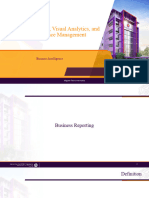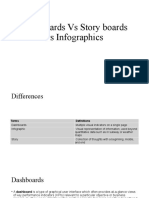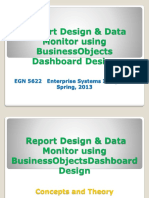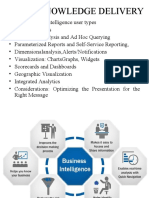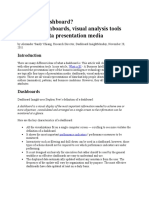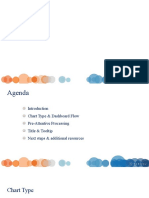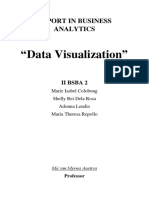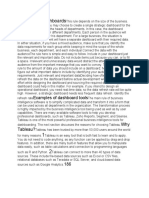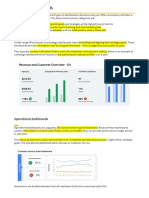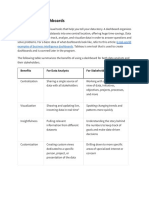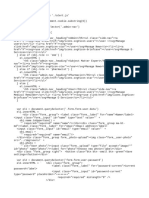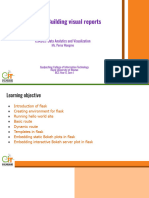0% found this document useful (0 votes)
60 views26 pagesDASHBOARDS
This document discusses different types of dashboards and tools for building dashboards. It describes operational, analytical, and strategic dashboards and provides examples. It also provides a quick overview of popular dashboard tools like Streamlit, Dash, Panel, Shiny, Jupyter, Voila and Flask comparing their maturity, popularity, simplicity, adaptability, and focus.
Uploaded by
Nima DorjiCopyright
© © All Rights Reserved
We take content rights seriously. If you suspect this is your content, claim it here.
Available Formats
Download as PDF, TXT or read online on Scribd
0% found this document useful (0 votes)
60 views26 pagesDASHBOARDS
This document discusses different types of dashboards and tools for building dashboards. It describes operational, analytical, and strategic dashboards and provides examples. It also provides a quick overview of popular dashboard tools like Streamlit, Dash, Panel, Shiny, Jupyter, Voila and Flask comparing their maturity, popularity, simplicity, adaptability, and focus.
Uploaded by
Nima DorjiCopyright
© © All Rights Reserved
We take content rights seriously. If you suspect this is your content, claim it here.
Available Formats
Download as PDF, TXT or read online on Scribd
/ 26





